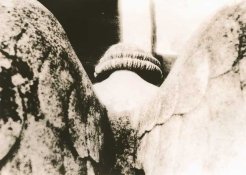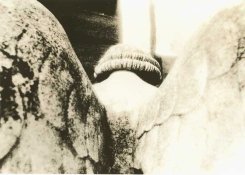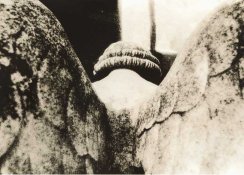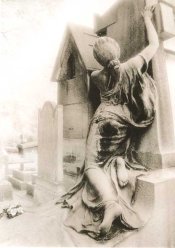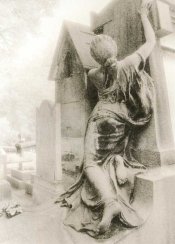mooseontheloose
Moderator
A new lith paper: Fuji Fujibro
It does lith, but...it's very slow!
I've decided to start a new thread just to post the results of my tests from this paper. As I've mentioned before, I'm far from being an experienced lith printer, so am just starting out with some basic dilutions and exposures based on my own experiences. I was hoping to try both sets of lith developers that I have (Fotospeed LD20 and Moersch SE5) but the development times were so long I called it a night after the Fotospeed.
Test 1:
Paper: Fuji Fujibro WP KM2 (Med. Weight, White, Near Matt, Normal), 5X7
Exposure: Normal black and white is 10 sec at f/8. For lith the first set was (+2 stops), second set (+3), third set (+4). Each pair was exposed at the same time and developed at the same time.
Developer: Fotospeed LD20. Two dilutions used (1+19) and (1+32).
Temperature: First set of prints (1a+b) around 24 C, 2nd set (2a+b) at 32 C, 3rd set (3a+b) around 28 C.
Comments:
1. The paper is slow....slow...........slow. The prints developed in the 1+19 dilution went from 32 minutes to 22 minutes (increased temp) to 44 minutes. The prints developed in the 1+32 dilution went from 54 minutes to 38 minutes to ...unprintable. The third print did not come up at all after 45 minutes. Adding a replenisher did not help. Eventually I put it in the 1+19 mix and a colourful, but faint image came up; however, I gave up after an hour since I knew it would take at least another 30 minutes for the blacks to come up. I cannot include this picture in my results since the scanner can't scan it.
This extreme slowness could be a result of the developer. My initial tests with the Moersch SE5 had developing times of around 17 minutes.
However long it takes an image to come up (say, 20 minutes), it will take equally long to get the blacks (so will finish around 40 minutes).
2. This paper suffers from serious pepper fogging in the Fotospeed LD20 developer. I've never seen it before and was quite curious about the effect, so I didn't add anything to the mix to stop it from occuring. The first print has a mild rash of pepper, the second a lot more, and the third has very large coarse grains.
3. I really like the colours this paper produces -- a very creamy, slightly pinkish colour with black blacks (no olive tint). However my scanner does not pick up the colours at all, so I've tried my best to match the colours on screen to what I have in hand. It's not exact, but since I'm not a photoshop expert it's the best I can do.
4. If you are living in Japan then you have access to this paper. If you aren't well...as far as I know it's not available worldwide at the moment. I think it's exciting to have a possible 'new' lith paper, but its lack of availability will probably keep it out of the hands of most unfortunately.
So...here are the results from last night. In order of upload the pictures are:
Image: Statue at Pere Lachaise Cemetery, Paris. Kodak HIE film.
1. Black and white, in Ilford Multigrade, 10 second exposure
2. +2 stops exp, 1+32 dilution, 54 minutes (24 C)
3. +3 stops exp, 1+32 dilution, 38 minutes (32 C)
4. +2 stops exp, 1+19 dilution, 32 minutes (24 C)
5. +3 stops exp, 1+19 dilution, 22 minutes (32 C)
6. +4 stops exp, 1+19 dilution, 44 minutes (28 C) -- replenished at 30 minutes, serious pepper fogging
PS. I'd appreciate any thoughts on any part of the process, why the paper is so slow (and exhausts the developer so quickly?) and what I might try next.
It does lith, but...it's very slow!
I've decided to start a new thread just to post the results of my tests from this paper. As I've mentioned before, I'm far from being an experienced lith printer, so am just starting out with some basic dilutions and exposures based on my own experiences. I was hoping to try both sets of lith developers that I have (Fotospeed LD20 and Moersch SE5) but the development times were so long I called it a night after the Fotospeed.
Test 1:
Paper: Fuji Fujibro WP KM2 (Med. Weight, White, Near Matt, Normal), 5X7
Exposure: Normal black and white is 10 sec at f/8. For lith the first set was (+2 stops), second set (+3), third set (+4). Each pair was exposed at the same time and developed at the same time.
Developer: Fotospeed LD20. Two dilutions used (1+19) and (1+32).
Temperature: First set of prints (1a+b) around 24 C, 2nd set (2a+b) at 32 C, 3rd set (3a+b) around 28 C.
Comments:
1. The paper is slow....slow...........slow. The prints developed in the 1+19 dilution went from 32 minutes to 22 minutes (increased temp) to 44 minutes. The prints developed in the 1+32 dilution went from 54 minutes to 38 minutes to ...unprintable. The third print did not come up at all after 45 minutes. Adding a replenisher did not help. Eventually I put it in the 1+19 mix and a colourful, but faint image came up; however, I gave up after an hour since I knew it would take at least another 30 minutes for the blacks to come up. I cannot include this picture in my results since the scanner can't scan it.
This extreme slowness could be a result of the developer. My initial tests with the Moersch SE5 had developing times of around 17 minutes.
However long it takes an image to come up (say, 20 minutes), it will take equally long to get the blacks (so will finish around 40 minutes).
2. This paper suffers from serious pepper fogging in the Fotospeed LD20 developer. I've never seen it before and was quite curious about the effect, so I didn't add anything to the mix to stop it from occuring. The first print has a mild rash of pepper, the second a lot more, and the third has very large coarse grains.
3. I really like the colours this paper produces -- a very creamy, slightly pinkish colour with black blacks (no olive tint). However my scanner does not pick up the colours at all, so I've tried my best to match the colours on screen to what I have in hand. It's not exact, but since I'm not a photoshop expert it's the best I can do.
4. If you are living in Japan then you have access to this paper. If you aren't well...as far as I know it's not available worldwide at the moment. I think it's exciting to have a possible 'new' lith paper, but its lack of availability will probably keep it out of the hands of most unfortunately.
So...here are the results from last night. In order of upload the pictures are:
Image: Statue at Pere Lachaise Cemetery, Paris. Kodak HIE film.
1. Black and white, in Ilford Multigrade, 10 second exposure
2. +2 stops exp, 1+32 dilution, 54 minutes (24 C)
3. +3 stops exp, 1+32 dilution, 38 minutes (32 C)
4. +2 stops exp, 1+19 dilution, 32 minutes (24 C)
5. +3 stops exp, 1+19 dilution, 22 minutes (32 C)
6. +4 stops exp, 1+19 dilution, 44 minutes (28 C) -- replenished at 30 minutes, serious pepper fogging
PS. I'd appreciate any thoughts on any part of the process, why the paper is so slow (and exhausts the developer so quickly?) and what I might try next.
Attachments
Last edited by a moderator:









